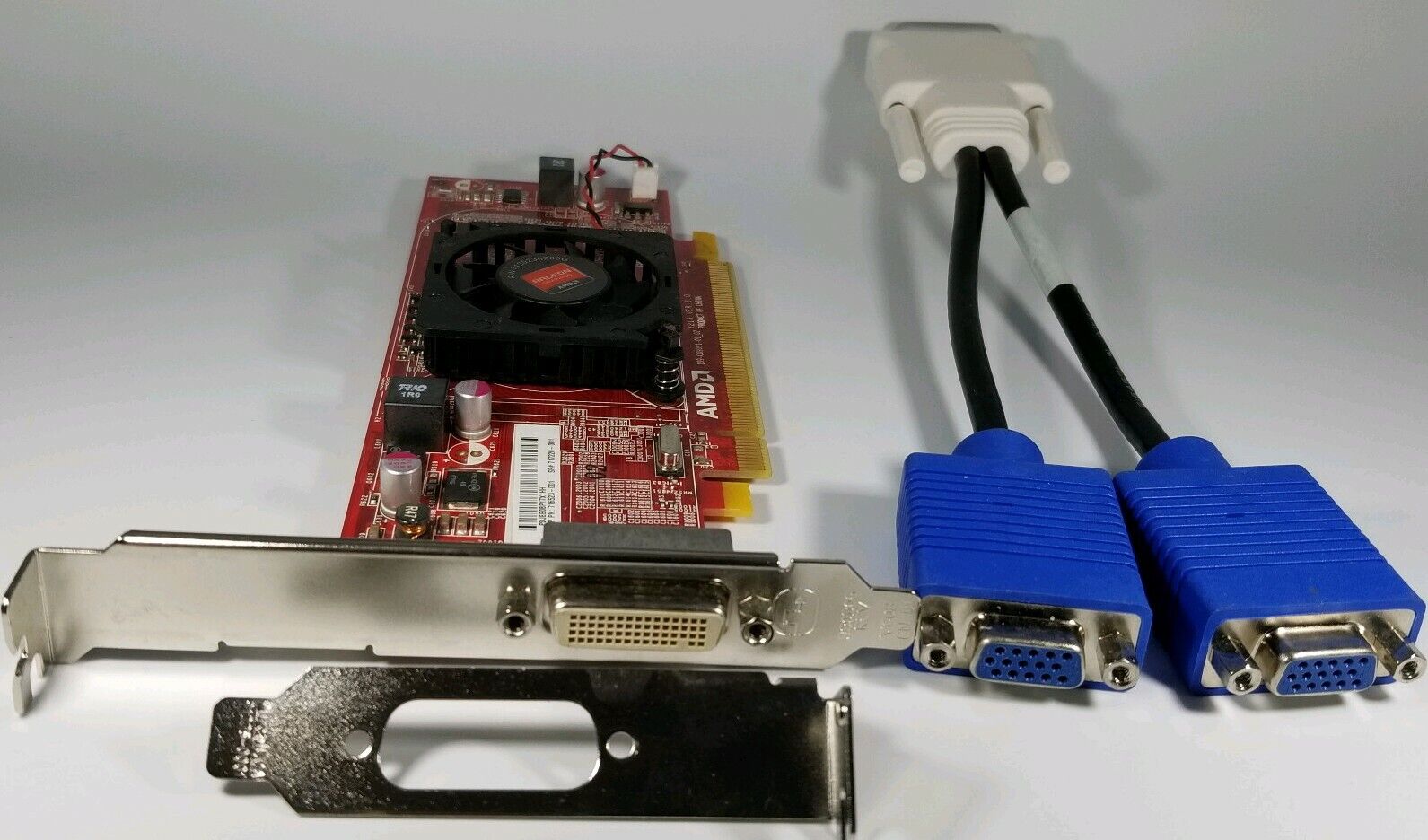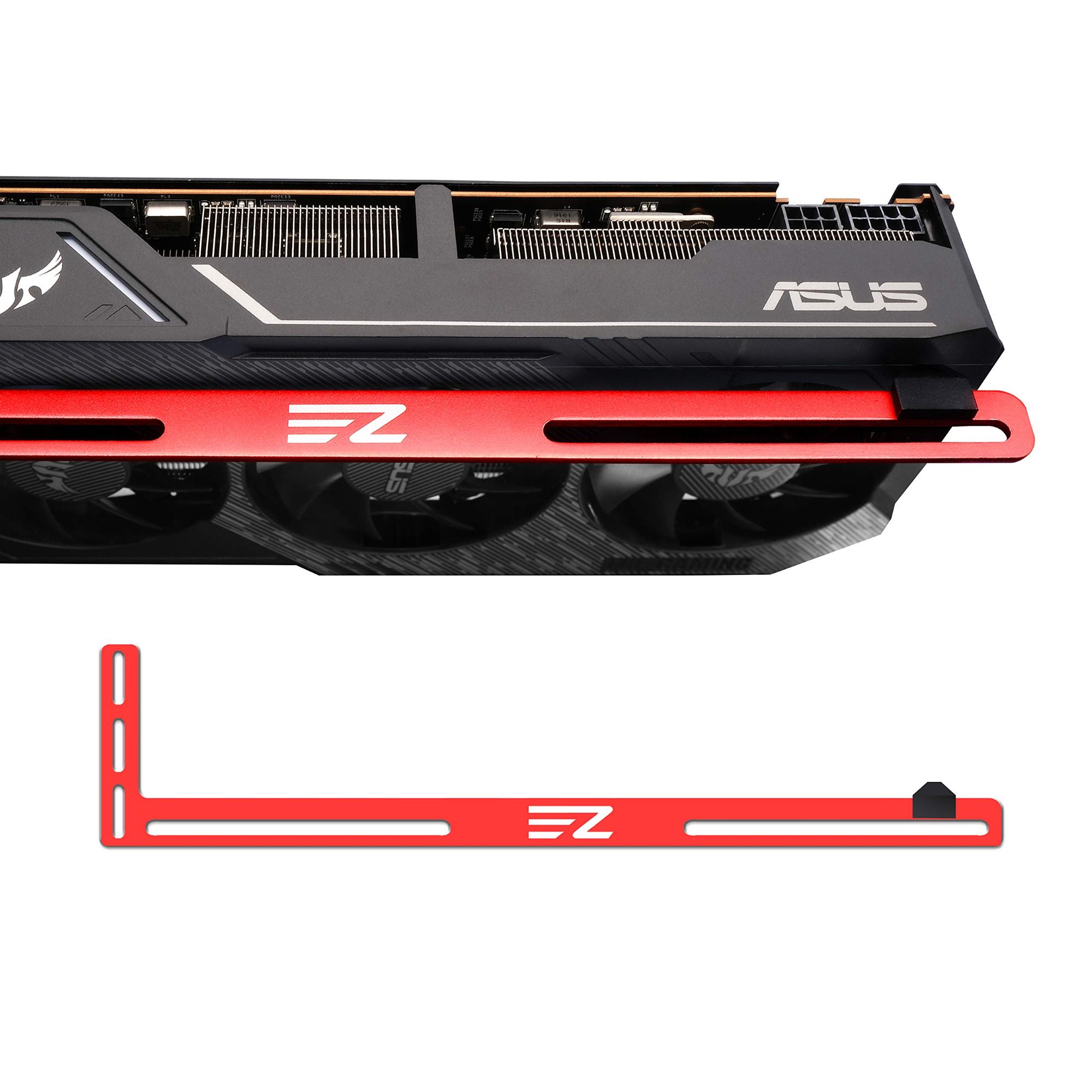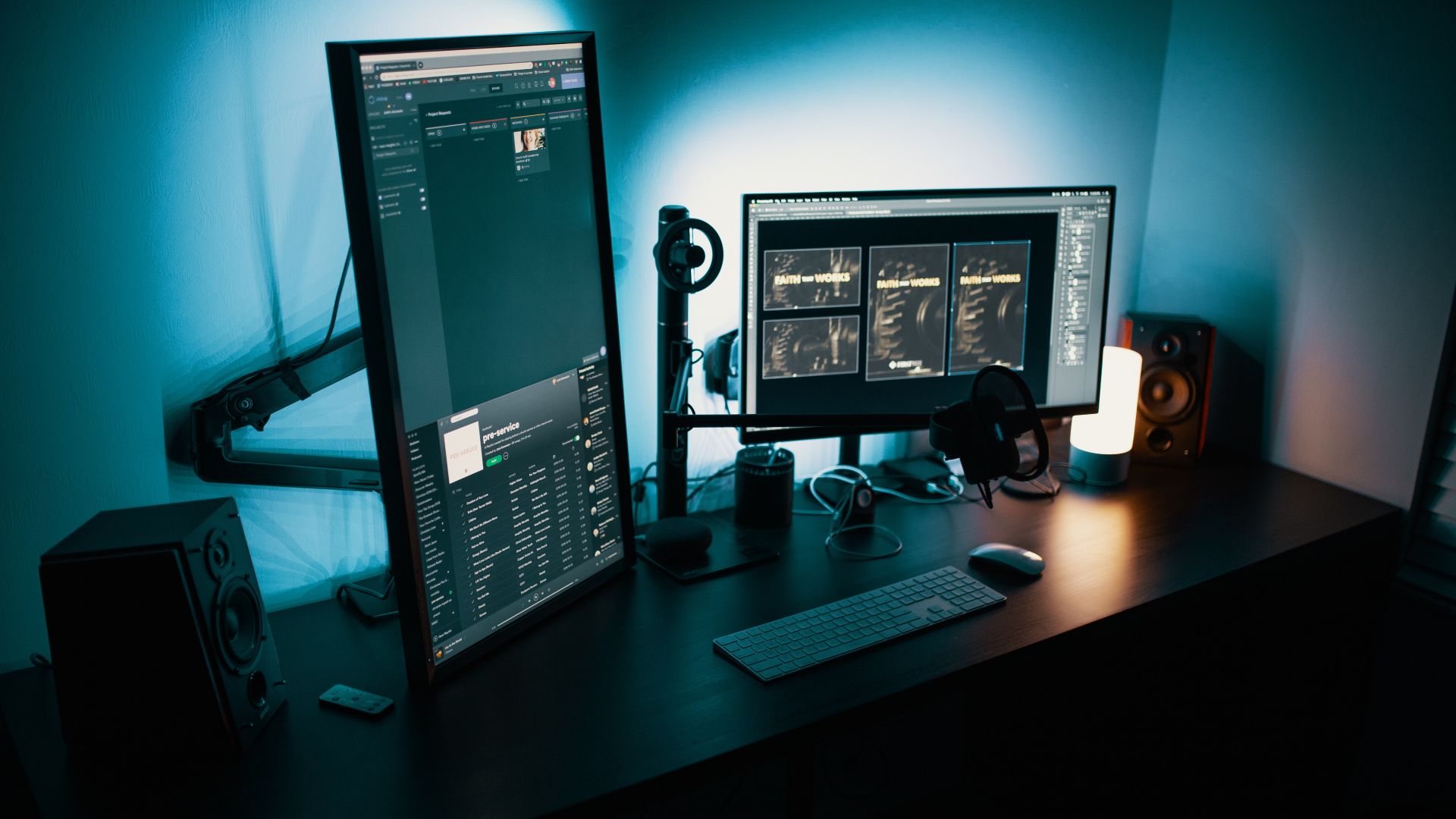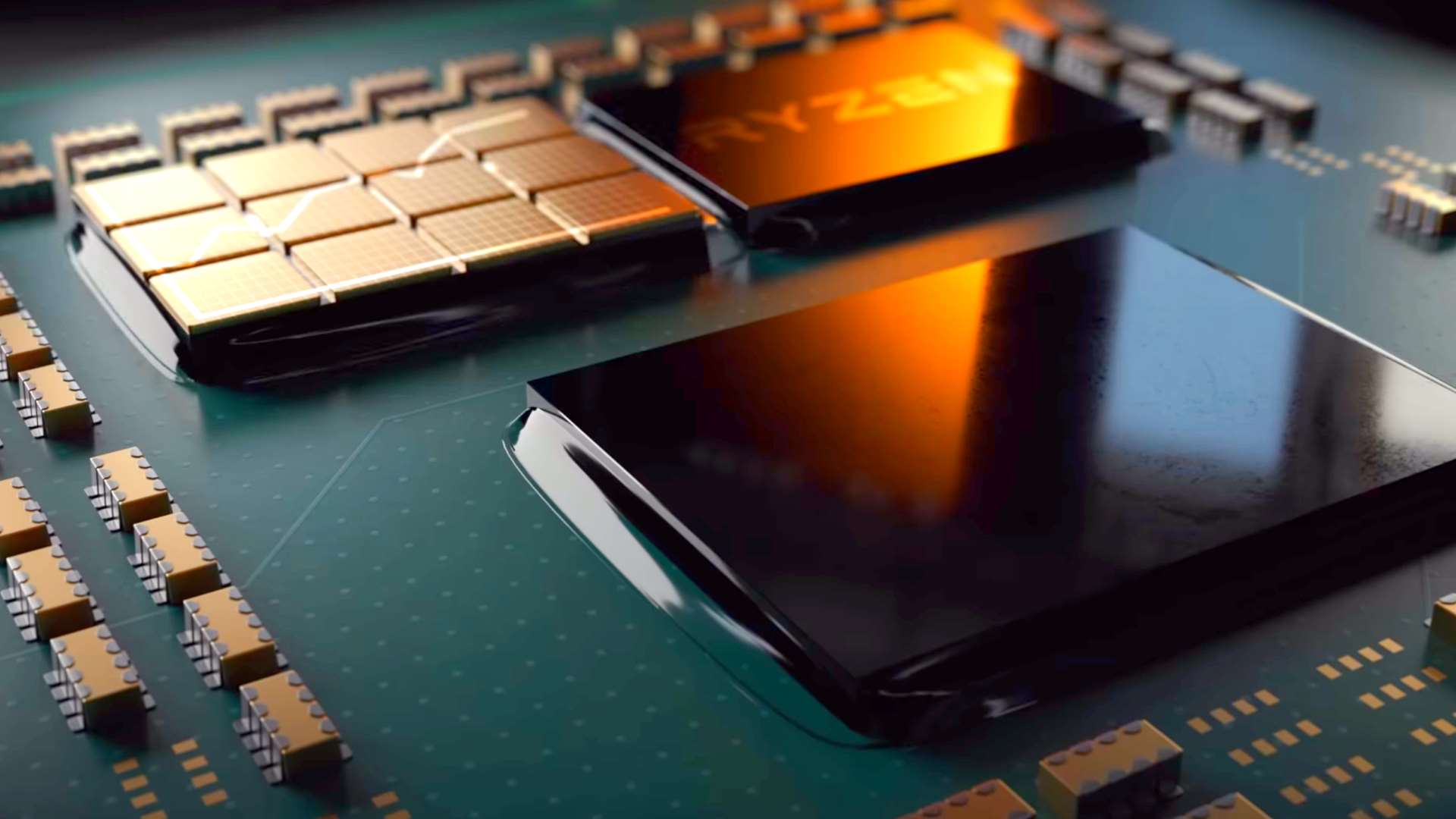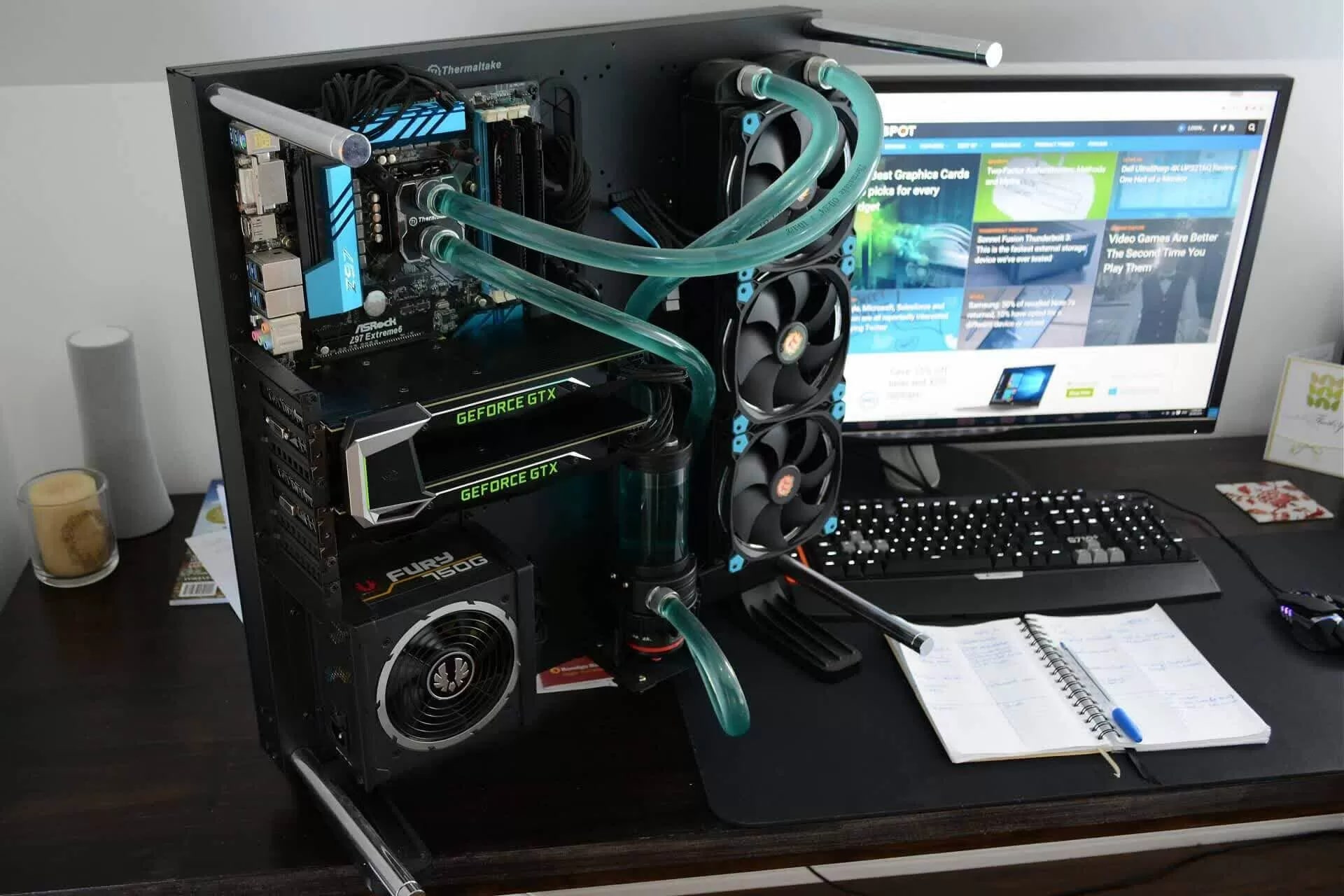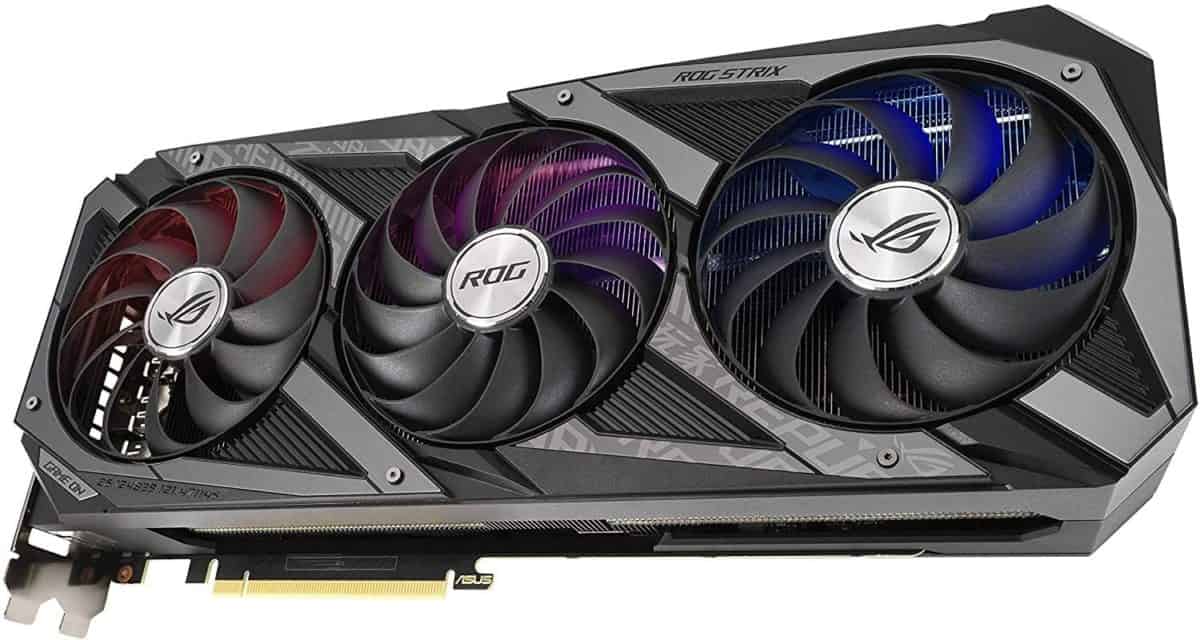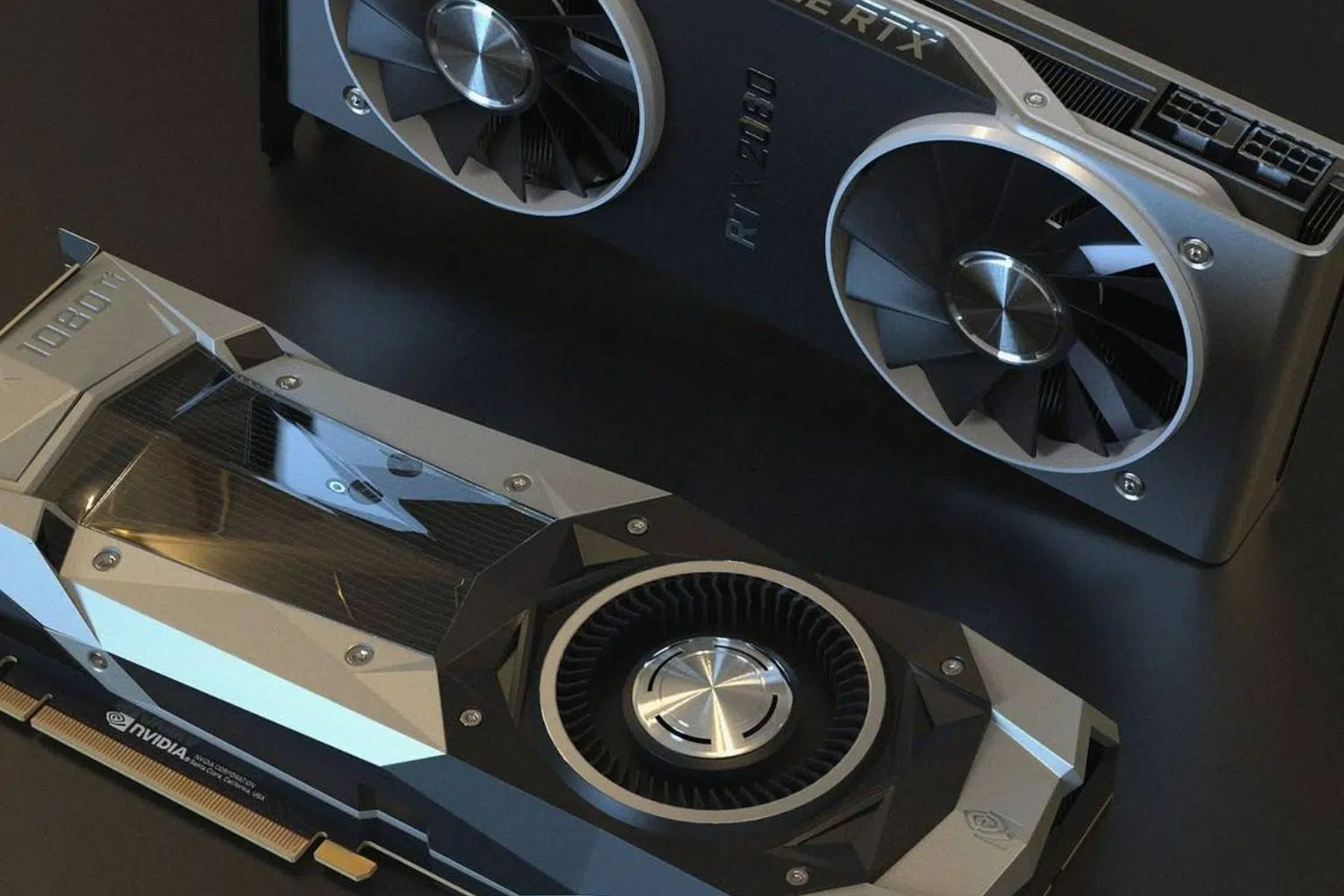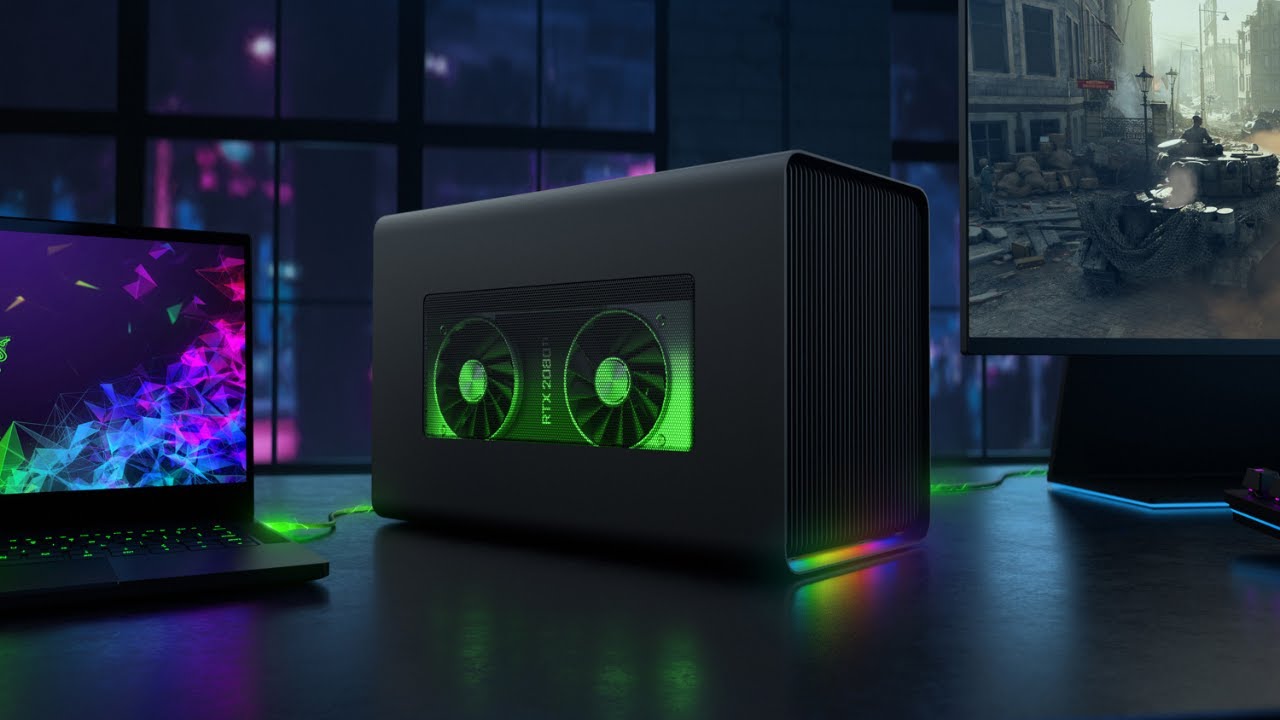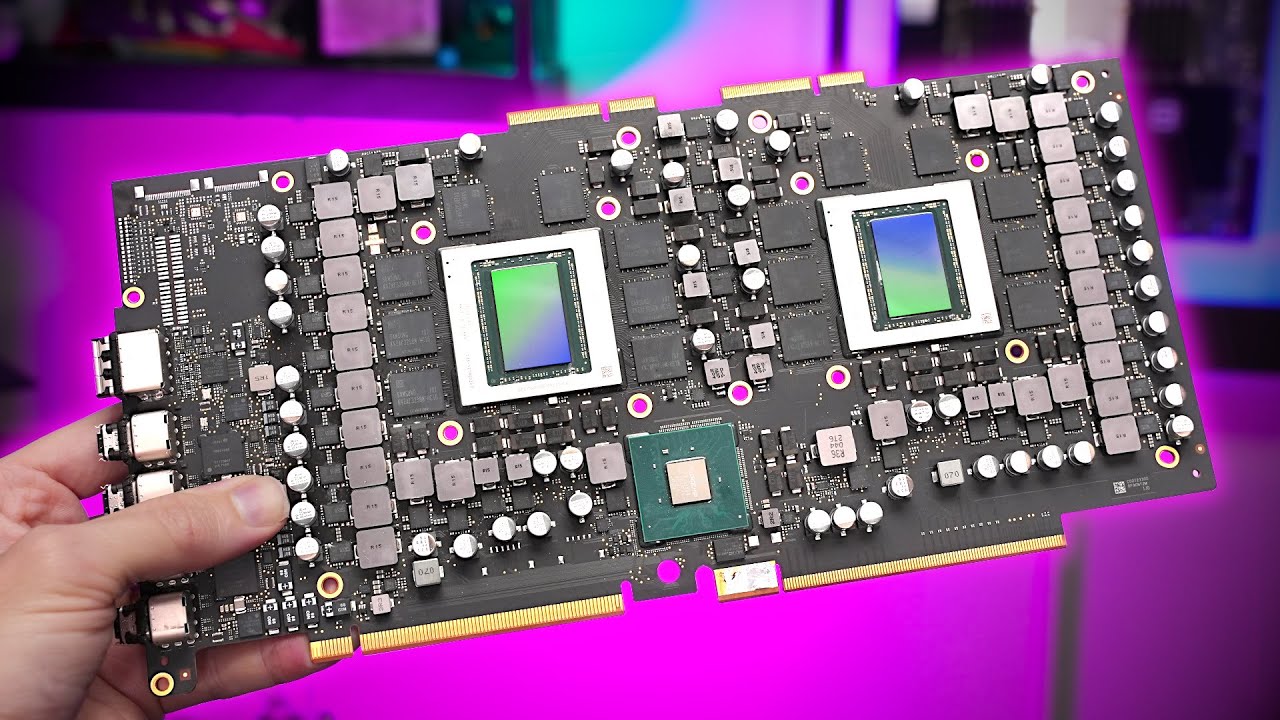Introduction
In today’s digital age, having a dual monitor setup has become increasingly popular among users who require more screen real estate for productivity, multitasking, and immersive gaming experiences. Dual monitors enable you to simultaneously view and work on multiple applications or documents, providing a significant boost to your productivity and efficiency.
However, not all graphics cards support dual monitors. To enjoy the benefits of a dual monitor setup, it is crucial to ensure that your graphics card is capable of driving two displays. In this article, we will guide you through the process of determining whether your graphics card supports dual monitors.
Understanding the capabilities of your graphics card is essential, as it determines the number of monitors you can connect and the optimal resolution for each display. Whether you are a professional working on complex projects, a gamer seeking an immersive gaming experience, or simply someone who appreciates the convenience of a dual monitor setup, knowing how to check for dual monitor support is crucial.
In the following sections, we will delve into the specifics of checking your graphics card specifications, examining the different video outputs, exploring connectivity options, and ensuring software compatibility. By the end of this article, you will have a comprehensive understanding of what to look for when determining whether your graphics card can handle dual monitors.
Understanding Dual Monitors
Before diving into how to check if your graphics card supports dual monitors, it’s essential to have a clear understanding of what dual monitors are and the benefits they offer.
Dual monitors, also known as multi-monitor setups, involve connecting two displays to your computer, allowing you to extend your desktop across both screens. This setup provides several advantages over a single monitor configuration.
First and foremost, having dual monitors significantly enhances productivity. By spreading your tasks across two screens, you can have multiple applications or documents open side by side, eliminating the need to constantly switch between windows. This feature is particularly beneficial for professionals who need to refer to multiple documents or applications simultaneously, such as designers, programmers, and content creators.
Furthermore, dual monitors offer a more immersive gaming experience. Gamers can have their game running on one screen while using the other to monitor chats, streams, or guides, eliminating the need to continuously tab in and out of the game. Additionally, the extended screen real estate allows for a wider field of view, giving gamers a competitive edge by providing a larger display area.
Another advantage of dual monitors is improved multitasking. Whether you’re a student researching and writing, a professional managing emails and spreadsheets, or a video editor working on multiple timelines simultaneously, dual monitors allow for seamless multitasking. With this setup, you can keep reference materials or additional applications handy on one screen while focusing on your primary task on the other.
Finally, dual monitors enhance both entertainment and content consumption experiences. You can watch videos or stream content on one screen while browsing the internet, chatting with friends, or checking social media on the other. This versatility allows for a more enjoyable and efficient multimedia experience.
In summary, dual monitors provide numerous benefits, including increased productivity, enhanced gaming experiences, improved multitasking, and an enriched entertainment experience. Understanding the advantages of dual monitors lays the foundation for exploring if your graphics card supports this setup.
Checking Graphics Card Specifications
When determining whether your graphics card supports dual monitors, the first step is to examine the specifications of your graphics card. This information will give you a clear understanding of the capabilities and limitations of your hardware.
To check the specifications of your graphics card, you can follow these steps:
- Open the Start menu and search for “Device Manager.”
- Click on “Device Manager” to open the application.
- In the Device Manager window, expand the “Display adapters” category.
- Right-click on your graphics card and select “Properties.”
- In the Properties window, go to the “Details” tab.
- From the drop-down menu, select “Hardware Ids.”
- Look for the “VEN” and “DEV” codes. These two codes represent the vendor and device identification of your graphics card.
Once you have the vendor and device identification codes, you can search for your graphics card model online or on the manufacturer’s website to find the detailed specifications.
When examining the specifications, look for the following details:
- Multi-monitor support: Check if the specifications mention support for dual monitors or multiple displays. Some graphics cards may support even more than two monitors.
- Video outputs: Look for the number and type of video outputs available on the graphics card. Common video output options include HDMI, DisplayPort, DVI, and VGA.
- Maximum resolution: Determine the maximum resolution supported by your graphics card. This information is crucial to ensure that your monitors can be set to their native resolution for optimal image quality.
- Memory: Take note of the graphics card’s memory capacity, as this can also impact its ability to handle dual monitors and graphics-intensive tasks.
- Compatibility: Check for any compatibility requirements or restrictions specific to the graphics card model.
By carefully examining the specifications of your graphics card, you can determine its capacity to support dual monitors and make an informed decision regarding your dual monitor setup.
Video Outputs
When assessing whether your graphics card supports dual monitors, it is essential to understand the different video outputs it offers. Video outputs are the physical connectors that allow you to connect your monitors to the graphics card.
Common video output options found on graphics cards include:
- HDMI (High-Definition Multimedia Interface): HDMI is a widely-used video output that supports high-definition audio and video signals. It is commonly found on modern graphics cards and monitors.
- DisplayPort: DisplayPort is another popular video output that provides high-quality audio and video transmission. It offers more bandwidth than HDMI and can support higher resolutions and refresh rates.
- DVI (Digital Visual Interface): DVI is a digital video output that comes in different versions, including DVI-I (integrated), DVI-D (digital only), and DVI-A (analog only). DVI is commonly used for older monitors or graphics cards.
- VGA (Video Graphics Array): VGA is an analog video output that was once the standard for connecting monitors. It has been largely replaced by newer digital video outputs but may still be present on some older graphics cards and monitors.
When planning a dual monitor setup, it is crucial to ensure that both your graphics card and monitors have compatible video outputs. If your graphics card offers multiple video output options, you can connect each monitor to a separate video output for a dual monitor configuration.
However, suppose your graphics card has only one video output, or the number of video outputs is insufficient for the desired dual monitor setup. In that case, you may need to explore alternative options, such as using a video adapter or a docking station that can expand the number of available video outputs.
Additionally, bear in mind that the resolution and refresh rate you can achieve on each monitor may depend on the specific video output used. Some older video output options like VGA may have limitations compared to newer digital options like HDMI or DisplayPort. Ensure that the video outputs and resolutions meet your requirements for a smooth and visually pleasing dual monitor setup.
Understanding the video outputs available on your graphics card ensures compatibility with your monitors and enables a successful dual monitor configuration.
Connectivity Options
When determining whether your graphics card supports dual monitors, it is crucial to consider the connectivity options available. Connectivity options refer to the different methods by which you can connect your monitors to the graphics card.
Below are the common connectivity options to be aware of:
- Direct cables: Many monitors and graphics cards support direct connection using cables such as HDMI, DisplayPort, DVI, or VGA. Ensure that your graphics card has the necessary ports to connect each monitor using the appropriate cable.
- Adapters: In situations where your graphics card does not have the required ports for your monitors, adapters can come to the rescue. Adapters allow you to convert one type of video output to another. For example, if your graphics card has a DisplayPort output, but your monitor only supports HDMI, you can use a DisplayPort-to-HDMI adapter to connect the two.
- Docking stations: Docking stations offer a convenient solution for connecting multiple monitors to your graphics card. These devices typically connect to your computer through a single cable, providing multiple video outputs, USB ports, and other connectivity options for a more versatile workstation setup.
- Multi-monitor adapters: Multi-monitor adapters are devices that enable you to connect multiple monitors using a single video output from your graphics card. These adapters can split the video signal to display on multiple screens with the help of software or hardware configurations.
When evaluating connectivity options, it is important to consider the compatibility between your graphics card, monitors, and the specific cables or adapters you plan to use. Ensure that the cables and adapters support the required resolutions, refresh rates, and video signal types to maintain optimal performance and image quality.
It’s worth noting that different connectivity options may have limitations in terms of the maximum resolutions or refresh rates they can support. Be mindful of these limitations when setting up your dual monitor configuration to ensure a seamless and visually satisfying experience.
Understanding the connectivity options available and ensuring compatibility between your graphics card, monitors, and cables or adapters is crucial for successfully setting up and utilizing a dual monitor configuration.
Multi-Monitor Support
When determining whether your graphics card supports dual monitors, it is essential to check for multi-monitor support. Multi-monitor support refers to the ability of a graphics card to handle and drive multiple displays simultaneously.
Most modern graphics cards are designed with multi-monitor support in mind and can handle dual monitors, and in some cases, even more than two monitors. However, it is vital to verify the specific details of multi-monitor support for your graphics card.
There are a few factors to consider when assessing the multi-monitor support of your graphics card:
- Maximum number of supported monitors: Check the specifications or documentation of your graphics card to determine the maximum number of monitors it can support. While dual monitors are a common configuration, some graphics cards may offer the ability to connect three or more displays.
- Resolution and refresh rate compatibility: Verify that your graphics card can handle the desired resolution and refresh rate for each monitor in your dual monitor setup. Higher resolutions and refresh rates may require more power and potentially limit the number of monitors that can be connected.
- Hardware requirements: Some graphics cards may require specific hardware configurations, such as a certain amount of memory or a power supply capable of supporting multiple displays. Ensure that your system meets these requirements to ensure smooth multi-monitor operation.
- Operating system support: Check if your operating system supports multi-monitor setups. Most modern operating systems, such as Windows and macOS, offer built-in support for multiple displays. However, it’s always good to verify compatibility to avoid any potential issues.
When a graphics card has multi-monitor support, it enables you to extend your desktop across multiple displays effortlessly. This means you can move windows and applications seamlessly between monitors, effectively increasing your workspace and enhancing productivity.
Multi-monitor support is particularly valuable for professionals working with complex projects, gamers seeking an immersive gaming experience, or anyone requiring extensive multitasking capabilities. By leveraging the power of a graphics card with multi-monitor support, you can unlock the full potential of a dual monitor setup.
Ensure that your graphics card’s multi-monitor support aligns with your requirements and desired configuration before proceeding with setting up multiple displays.
Software Compatibility
Another factor to consider when determining whether your graphics card supports dual monitors is software compatibility. While most modern graphics cards are compatible with various operating systems and software applications, it is essential to ensure seamless integration with your desired setup.
Here are some aspects to consider regarding software compatibility:
- Graphics card drivers: Ensure that you have the latest drivers installed for your graphics card. Drivers act as a bridge between the hardware and the operating system, enabling proper functioning and optimal performance. Check the graphics card manufacturer’s website for the latest drivers specific to your model and operating system.
- Operating system support: Verify that your operating system supports dual monitors and is compatible with your graphics card. Different operating systems may have specific requirements or limitations for multi-monitor setups. Ensure that your operating system allows the extended desktop feature and provides seamless integration for managing multiple displays.
- Software applications: Consider the specific software applications you plan to use with your dual monitors. Some applications, such as video editing or graphic design software, may have specific display requirements or offer enhanced functionality when using multiple monitors. Verify compatibility with these applications to maximize their benefits in a dual monitor configuration.
- Window management software: To optimize your dual monitor experience, consider using window management software. These applications allow you to control window placement, resizing, and snapping on different monitors, making it easier to manage multiple applications and enhance productivity.
- Gaming support: If you intend to use your dual monitor setup for gaming, check if the games you play support multi-monitor configurations. Some games provide enhanced gameplay options, such as wider field of view or separate display for in-game stats or maps when using dual monitors. Verify game compatibility and explore any additional settings required for optimal gaming experiences.
By ensuring software compatibility, you can leverage the full potential of your dual monitor setup. Compatibility with drivers, operating systems, software applications, and additional tools or utilities will contribute to a smooth and seamless multi-monitor experience.
Research the compatibility requirements of your graphics card, operating system, and software applications to ensure a hassle-free integration and effective utilization of your dual monitor configuration.
Prioritizing Graphics Ports
When setting up a dual monitor configuration, it is important to consider prioritizing the graphics ports on your graphics card. Prioritizing graphics ports allows you to optimize the performance and functionality of your dual monitor setup.
Here are a few factors to consider when prioritizing the graphics ports:
- Primary and secondary ports: Some graphics cards have specific ports designated as primary and secondary. The primary port is typically labeled as the primary display output and is the recommended port to connect your primary monitor. The secondary port can be used for the secondary monitor.
- Bandwidth and capabilities: Different graphics ports may have varying bandwidth capabilities and functionalities. Ports such as DisplayPort and HDMI generally offer higher bandwidth and support higher resolutions and refresh rates compared to other options like DVI or VGA. Prioritize using ports that can handle the desired display specifications for your primary monitor.
- Compatibility and available adapters: Consider the compatibility between the graphics ports on your graphics card and the available adapters or cables you have. Some monitors may have specific input port preferences, and certain adapters may have limitations or requirements for specific graphics ports. Ensure that you have the necessary adapters or cables to connect both monitors to the appropriate ports.
- Software settings: Many graphics cards come with software settings that allow you to configure and customize your dual monitor setup. These settings often enable you to control screen orientation, resolution, and other display options. Take advantage of these software settings to fine-tune your dual monitor configuration based on your specific needs.
- Gaming and multimedia requirements: If you plan to use your dual monitor setup for gaming, multimedia applications, or other graphics-intensive tasks, consider the requirements and recommendations of the software you will be using. Some applications may suggest specific ports or settings to ensure optimal performance and compatibility.
By prioritizing the graphics ports on your graphics card, you can ensure that each monitor is connected to the most suitable port for optimal performance and compatibility. This approach allows you to take advantage of the capabilities provided by different ports and tailor your setup to meet your specific requirements.
Remember to consult the documentation or user manual provided by your graphics card manufacturer for any specific recommendations or requirements when prioritizing graphics ports.
Dual Monitor Setup
Now that you have determined that your graphics card supports dual monitors and have considered the various factors involved, it is time to set up your dual monitor configuration. Follow these steps to ensure a successful setup:
- Identify the video outputs on your graphics card: Locate the video outputs on your graphics card and identify the ports that you will be using to connect your monitors. Refer to the prioritization of graphics ports if applicable.
- Verify monitor compatibility: Ensure that your monitors have the necessary input ports and cables to connect to your graphics card. Check for compatibility between the graphics ports and the monitor inputs (HDMI, DisplayPort, DVI, VGA) and use the appropriate adapters or cables if needed.
- Connect the monitors: Connect one end of the cable to the video output on your graphics card and the other end to the corresponding input on each monitor. Ensure a secure connection for both monitors.
- Adjust monitor settings: Once both monitors are connected, power them on and access the monitor settings menu. Configure the settings according to your preferences, including resolution, refresh rate, and screen orientation (landscape or portrait). Ensure that both monitors are recognized by your computer.
- Configure display settings: Access the display settings on your operating system. Depending on your operating system, you may find these settings in the control panel, system preferences, or display settings menu. Adjust the display arrangement, resolution, and other settings to set up your dual monitor configuration properly.
- Arrange and customize windows: Explore window management options provided by your operating system or third-party software. This allows you to customize how windows are placed and resized on each monitor, enabling efficient multitasking and maximizing productivity.
- Calibrate color and brightness: If color accuracy is important for your work or visual preferences, consider calibrating the monitors using a color calibration tool or software. This ensures consistent and accurate color representation across both displays.
- Test and fine-tune: Finally, test the dual monitor setup by opening applications, moving windows, and verifying that everything functions as intended. Make any necessary adjustments to the display settings or window management configurations to achieve the desired user experience.
Setting up a dual monitor configuration may require some trial and error to find the optimal settings and arrangement that suits your working style and preferences. Experiment with different configurations until you find the setup that enhances your productivity and meets your specific needs.
Remember to consult the documentation provided by your graphics card, operating system, and monitor manufacturers for any specific instructions or recommendations for setting up and configuring dual monitors.
Conclusion
Setting up a dual monitor configuration can greatly enhance productivity, multitasking capabilities, and overall user experience. To determine whether your graphics card supports dual monitors, evaluating its specifications, video outputs, multi-monitor support, connectivity options, software compatibility, and prioritizing graphics ports is essential.
By checking your graphics card’s specifications, you can ensure that it meets the necessary requirements for driving multiple displays. Understanding the video outputs available on your graphics card allows you to select the appropriate cables and adapters for connecting your monitors. Checking for multi-monitor support ensures that your graphics card can handle the desired number of displays and resolutions.
Considering the connectivity options and verifying software compatibility helps to ensure seamless integration with your desired setup and applications. Prioritizing graphics ports allows you to optimize performance and functionality, especially when specific ports are recommended for the primary and secondary monitors.
Once you have confirmed that your graphics card supports dual monitors, you can proceed with the physical setup, adjusting monitor settings, configuring display settings, and customizing window management options. Calibrating color and brightness may further enhance the visual experience if color accuracy is important.
With a successful dual monitor setup, you can take full advantage of the extended screen real estate, enabling efficient multitasking, improved productivity, immersive gaming experiences, and enhanced content consumption.
Remember to consult the documentation provided by your graphics card, operating system, and monitor manufacturers for any specific instructions or recommendations for setting up and configuring dual monitors.
Now that you have the knowledge and understanding of how to determine if your graphics card supports dual monitors, you can embark on creating your ideal dual monitor setup that suits your specific needs and takes your productivity and enjoyment to new heights.







